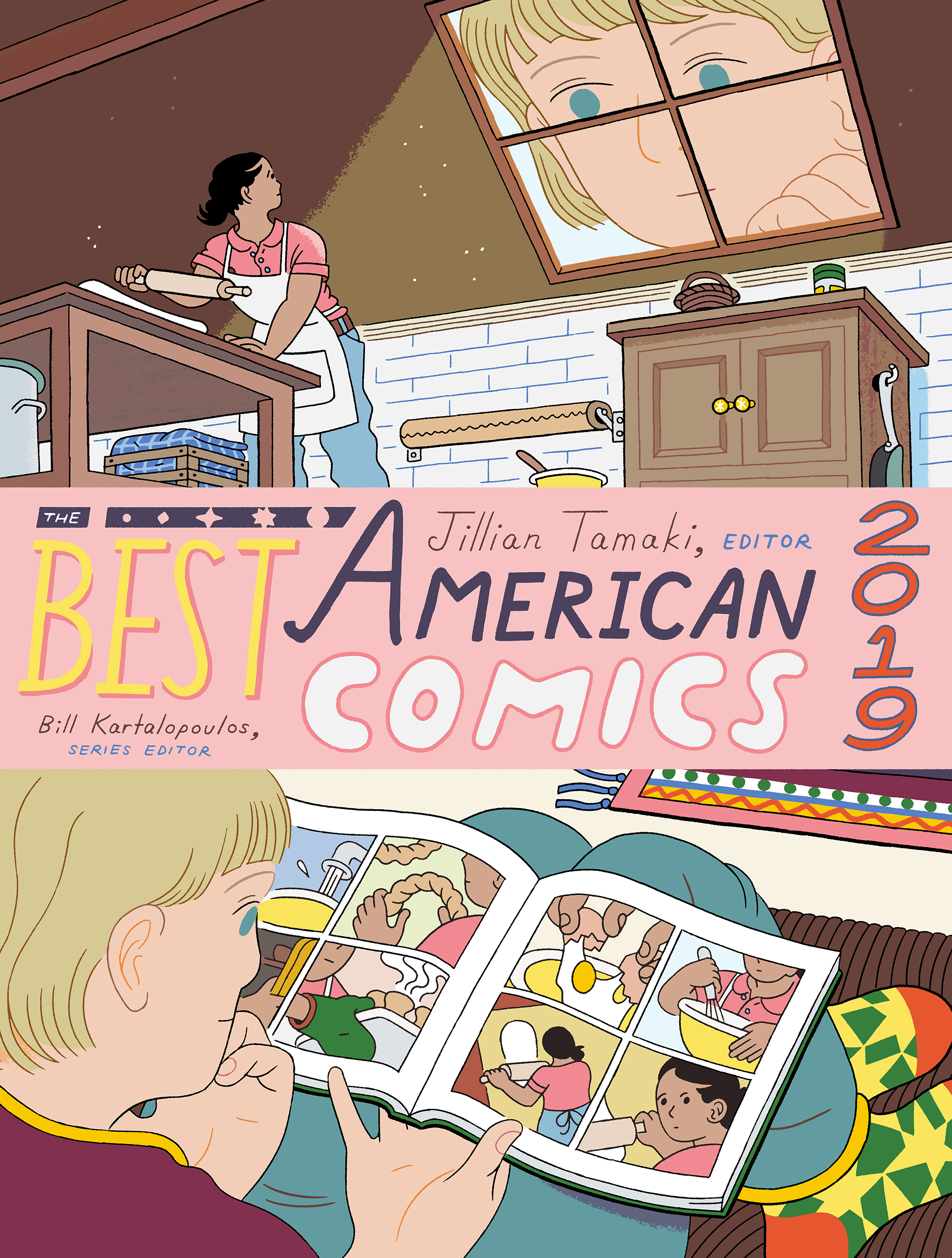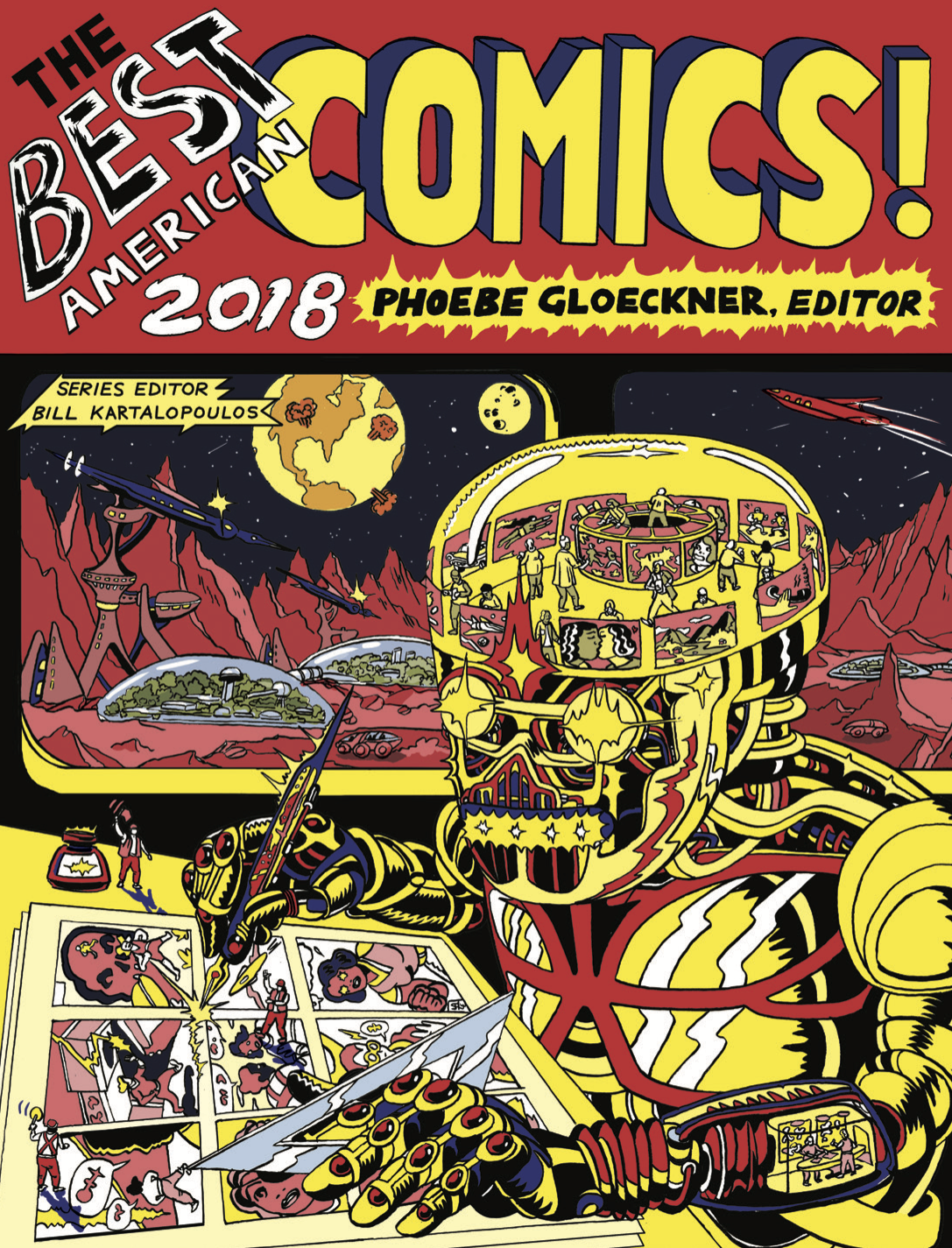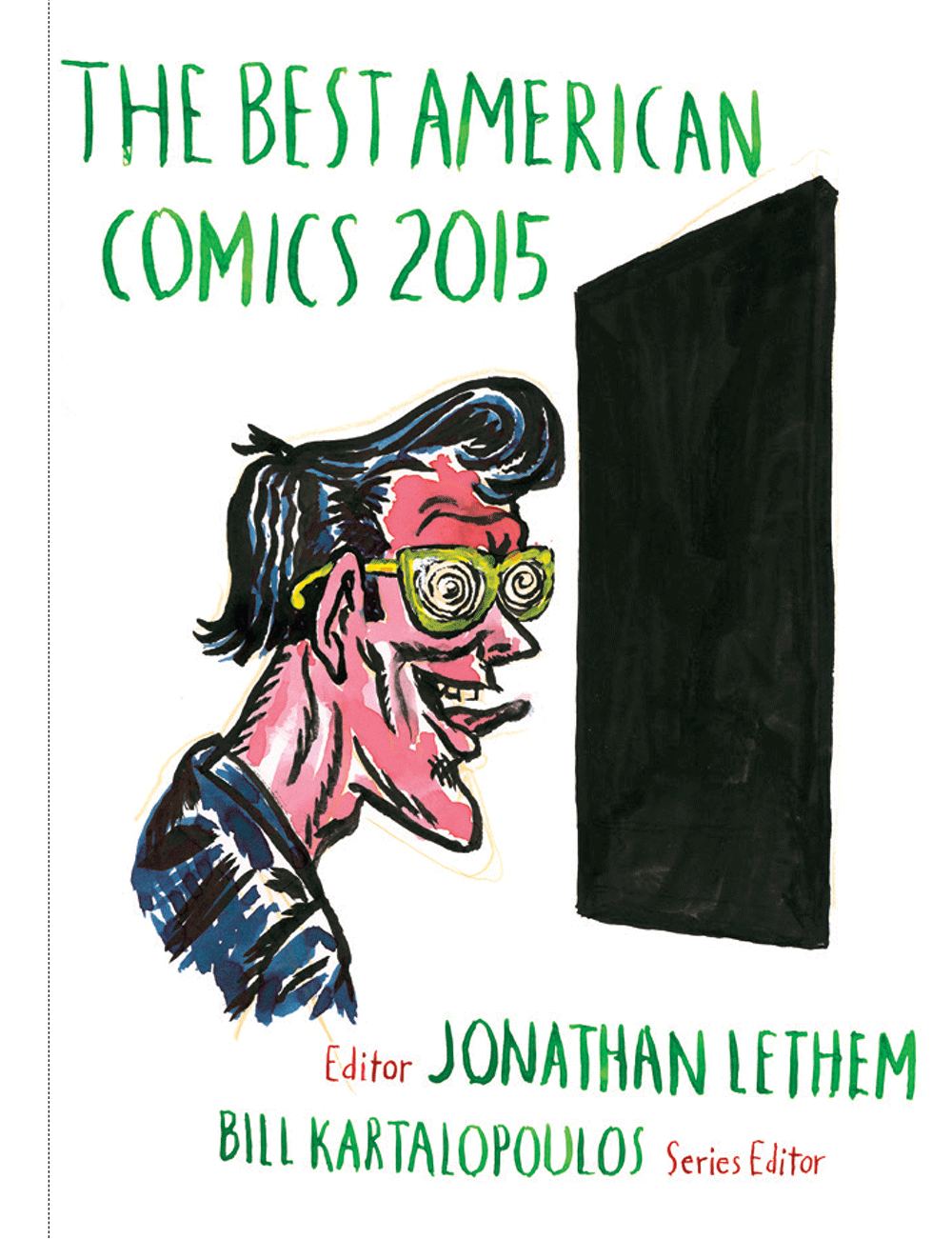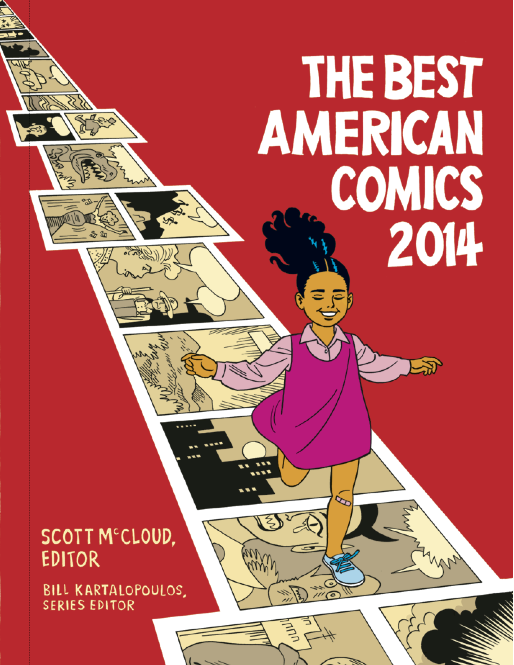





I was hired in 2012 by Houghton Mifflin Harcourt to take over as Series Editor for the annual Best American Comics series, beginning with the 2014 volume guest edited by Scott McCloud. Each year I closely tracked the constantly growing and changing comics field to collect the most interesting work I could find, and each year I collaborated with a talented Guest Editor to produce a full-color, hardcover anthology of great comics drawn from that rich pool of material. Over the course of the six volumes I worked on, we published nearly 2,000 pages of comics: some by familiar artists, some by new voices, and all of them offering an intriguing look into the vibrant world of contemporary North American comics.
The Best American Comics 2019, published last October and guest edited by Jillian Tamaki, was both my last volume as Series Editor and the final volume in the series. Houghton Mifflin Harcourt has discontinued The Best American Comics and The Best American Nonrequired Reading. Additionally, The Best American Sports Writing will end after this year's volume.
Much more than other fields that the Best American titles cover, I believe that comics will keenly feel the absence of an accessible, regularly-published mass market anthology that celebrates great work from diverse areas of comics while making implicit critical claims. The comics world and the publishing world are two distinct worlds that overlap, but don't entirely coincide. Since its founding in 2006, The Best American Comics has played an important role by staking out a position between those two worlds. From my own experience, I know that many readers discovered artists through the anthology whose work they would not have encountered otherwise. The book's average reader would likely never know about — let alone visit — a small press festival like SPX or TCAF or MoCCA or CAKE. The Best American Comics gave readers access to a much wider range of comics than did the graphic novel sections of many bookstores where it was sold.
The Best American Comics has also been good for the artists in the book. The series consistently featured small press or self-publishing artists alongside authors of critically-acclaimed graphic novels and insisted that they were all equally "Best." Artists whose work had never been reviewed in the mainstream press saw their pieces commented upon and praised in outlets like Publishers Weekly, Kirkus, the Washington Post, the Los Angeles Times, and too many others to list. The book was a regular and durable annual presence in the New York Times's "Hardcover Graphic Books" bestseller list when that was still running weekly. The 2016 volume debuted at #1 in the list's final year. For many contributors, the anthology's widespread retail availability meant that for the first time they could point a family member or relative to an easily accessible book containing their work. And I can't tell you how many times an artist told me how meaningful it was to be selected for inclusion by each year's guest editor. To know that their work was read, loved and endorsed by someone like Roz Chast, Jonathan Lethem or Phoebe Gloeckner was a powerful affirmation, especially (but not only) for younger artists.
In material terms, we paid a fair reprint fee to each contributing artist. For some it was a nice bonus, and for others it more significantly augmented the income (if any) they might have made from the work's initial publication. We commissioned original cover and endpaper artwork for each volume. We gave artists a platform to talk about their work at events, including our regular panels at the Strand and the Miami Book Fair. I displayed work by Best American Comics artists in dedicated exhibits that I curated in the two very disparate locales of Athens, Greece and South Bend, Indiana. I showed and discussed work by contributing artists in my public appearances in the US and abroad, including events in Colombia, Switzerland, and Russia.
As an annual, retrospective book in a standard format, Best American Comics had limitations. Having brushed up against those limitations many times over the years, I am proud of what we were able to accomplish within those parameters. Within our format, we found ways to represent comics in all their diverse forms: oversized silkscreen books, pocket sized minicomics, excerpts from graphic novels, digital comics in their amazing variety, and pretty much anything else you can think of. My experience only confirmed my belief that comics and visual narratives are a laboratory for imagining the future of the book.
In particular, I am proud to have brought into the series significant work from outside of the comics field as it is conventionally constructed. These include works by painter Julia Jacquette, book artist Deb Sokolow, and artist Raymond Pettibon, who also kindly contributed our 2015 cover. In 2017, guest editor Ben Katchor brought his own long-standing interests and engagements to the table and introduced work by so-called "outsider artists" working at arts centers for adults with mental disabilities. All of this prompted readers to think of comics not only as a species of art or literature, but to think about art as comics — or potentially anything as comics — and encouraged readers to develop a greater sense of what comics are and what they can be.
I could say a lot about the experience of reading approximately one thousand comics a year and having to make a lot of tough, quick critical choices. In one way, it's been something to recover from, but in many respects it's something that will enrich my reading for the rest of my life. This role has required me to simultaneously read more widely and to read more sharply.
Working with my Guest Editors and engaging their perspectives on art, comics and more was the single most rewarding part of this job and made everything else worth doing. I am grateful to all of the publishing professionals who facilitated any aspect of this process. These include the many great people I worked with at HMH, including my in-house editor, Nicole Angeloro, who made everything possible. My predecessors in the role, Jessica Abel and Matt Madden, showed me the ropes on my way in, and we all owe a debt to Anne Elizabeth Moore, who edited the first two volumes in the series.
The book would not have existed if so many incredible artists hadn't let us represent their work in the series. I was grateful to have a chance to consider all of the submissions that came to me, and anyone who ever recommended a comic to me that I hadn't heard about also has my deepest, sincerest thanks. My thanks to everyone who participated in, supported, read, and responded to the series during its lifetime. I hope that everyone who cared about the series will continue to care about and support the artists and works that, to them, represent the best in comics.
Bill Kartalopoulos
September 2020